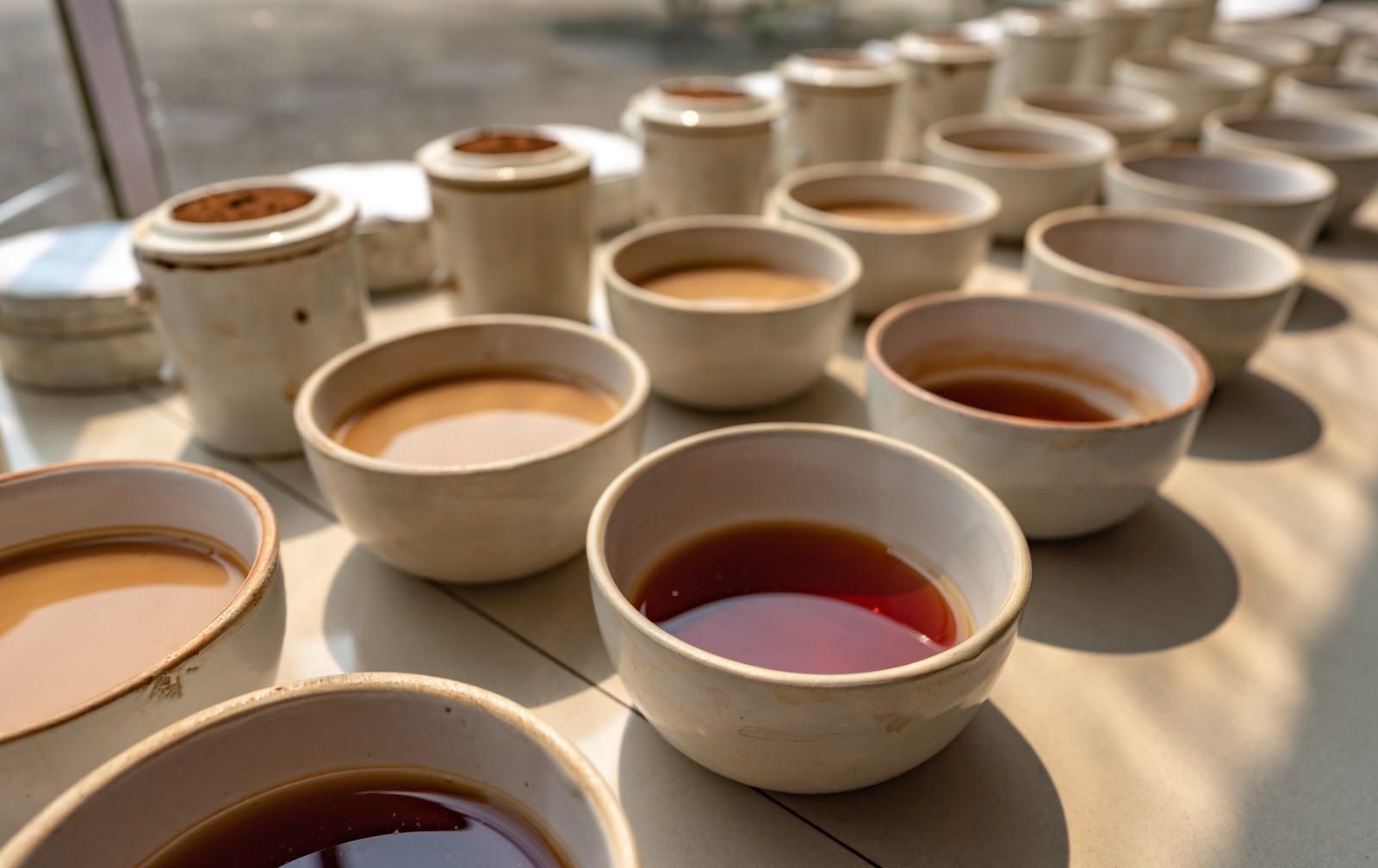How does black tea ferment to produce flower fragrance? how to deal with the humidity? how to deal with the fruit aroma of black tea?
There is an obvious difference in taste between fermented black tea and poorly fermented black tea. Well-made black tea gives off sweetness, while poorly made black tea gives off sour or musty taste. Observe the color, understand the skills in addition, the tea will show the effect of fermentation. Fermented tea produces a yellowish red liquid, while poorly fermented tea produces brown liquid. In addition, the difference in color is not only visible in the tea, but also affects the leaves. In fact, there is a significant difference in composition between fermented tea and poorly fermented tea. Well-made black tea contains theaflavins. It is often said that the main ingredient of black tea is tannin. However, tannin is a "general name" of substances formed by the oxidation and combination of polyphenols in plants. Any substance can be called tannin, as long as it is made of polymers and produces brown. To some extent, the substances contained in green tea are also called tannins in some tea books. Due to the lack of a clear definition of the word tannin, it has caused confusion among tea people, so I try not to use this word when describing the fermentation process of tea. The main ingredient of refined black tea is theaflavins. Theaflavins are different depending on which polyphenols it is made from. It is formed by the combination of 2-3 flavonoids and mediated by oxidase, which produces bright yellow substances. As we all know, a cup of exquisite black tea will have a golden halo on the wall of the cup. The golden ring is made of yellow pigment, theaflavins.

Theaflavins are a sign of fermentation failure. If the fermentation is not handled properly, theaflavins will combine with each other to form larger molecular substances. These substances have no specific structure and there are thousands of different substances. These substances are called lycopene. Once this substance is formed, the tea will produce a bad taste at the same time. The process of making black tea requires very fine operation. Fresh tea contains polyphenols. In the process of fermentation (oxidation), polyphenols combine to form theaflavins. However, through additional oxidation, theaflavins will be converted into lycopene. When there is a small mistake in this process, theaflavins will be excessive and produce lycopene immediately. The reaction is irreversible. Therefore, the production of black tea is very difficult and requires a great deal of experience and know-how to accurately control the process. The processing of black tea includes withering, rolling, fermentation and drying. In fact, in addition to the importance of the fermentation process, manufacturers should pay more attention to the whole process to ensure that the leaves do not overferment. When you look at the brewed leaves, you can easily judge the quality. The leaves of the finished tea leaves will be bright orange-brown, while the poor quality tea leaves will be dark brown.
Important Notice :
前街咖啡 FrontStreet Coffee has moved to new addredd:
FrontStreet Coffee Address: 315,Donghua East Road,GuangZhou
Tel:020 38364473
- Prev

Can I drink black tea with a bad stomach? Causes, efficacy, effects and side effects of astringent black tea
We have noticed that many customers do not drink black tea or raw Pu'er tea because of stomach discomfort. I have had a similar experience. I have a stomachache after drinking black tea. However, it has nothing to do with black tea or raw Pu'er tea. If the raw material of tea is not right, any kind of tea will have the same uncomfortable effect. However, if the tea is made of the right material
- Next
How much is the most expensive flavor of Fenghuang Dancong tea? Chaozhou Phoenix tea variety catalogue
Phoenix Dancong Oolong Tea is produced in Chaozhou, Guangdong Province. In Phoenix, the oldest tea tree tea is about 900 years old. But don't get me wrong, the process of making Phoenix single fir oolong was invented about 300 years ago. Fenghuang Dancong oolong tea has many similarities with Wuyi oolong tea. Generally speaking, it is similar to Wuyi oolong tea.
Related
- What ratio of water temperature and ground does the smart cup method use to press coffee? The difference between brewed coffee and filtered coffee?
- What is the standard process for the purpose of coffee cup testing? What is the difference between hand-brewed coffee and cup testing?
- How to use hand-brewed coffee paragon small golden balls? How does cold coffee lock in the aroma of coffee?
- Is American coffee black? What is the difference between American coffee and drip coffee?
- Unexpected! Well-known tea beverage brand Lele Tea will withdraw from the Zhengzhou market!
- Starbucks enters the fashion and beauty industry?! Netizen: Give me an ice American eye cream
- Why can American refills for free? The difference between Americano and American drip pot coffee
- Being chased out of the rain in front of Starbucks?! Store: Sheltering from rain under umbrellas poses a safety hazard
- The white moonlight has changed?! Lucky launches "Big Winter Pear American"
- Hand-brewed coffee three-stage method, high-sweet and universal brewing method to share! What does the high sweet water level of hand-brewed coffee mean?

